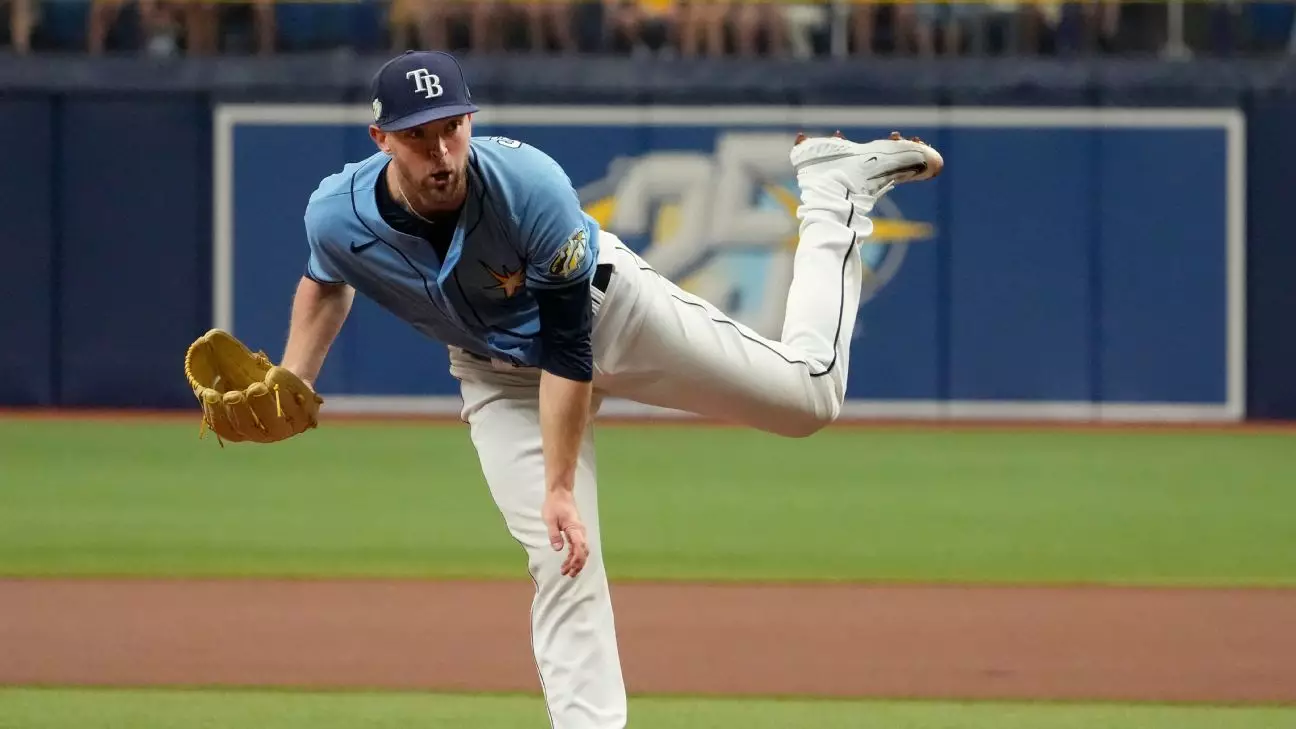The Oakland Athletics have made headlines with a provocative six-player trade involving the Tampa Bay Rays, acquiring left-handed pitcher Jeffrey Springs. This move represents a significant strategy shift as the Athletics prepare for their inaugural season in Sacramento, aiming to bolster their roster and enhance their competitive edge in the American League West.
Acquiring Springs is a strategic decision that showcases the A’s ambition as they push their payroll into the $100 million range. Springs, a 32-year-old pitcher, is not only coming off a productive stint with the Rays, where he excelled in 2022, but his contract—valued at $10.5 million for each of the next two seasons, with a potential $15 million club option for 2027—underscores the commitment the Athletics are making to invest in their future. This trade follows the recent signing of free agent Luis Severino, establishing a promising rotation that could transform the way the Athletics perform this coming season.
Jeffrey Springs, known for his impressive 3.27 ERA over seven starts last season, will join Severino and J.P. Sears in what appears to be a fortified rotation. Expectations are high for Springs, especially after successfully recovering from Tommy John surgery—an injury that has sidelined many players for extended periods. With a talented pool of pitchers including Hogan Harris, Joey Estes, and others, the Athletics are clearly trying to build a formidable pitching lineup to compete in a notoriously competitive division.
The Athletics are not just gaining a key player; they are sending several noteworthy talents to the Rays. Among them is Joe Boyle, a right-handed pitcher with the potential to make an immediate impact in the major leagues. At 6-foot-7 and boasting a 98 mph fastball, Boyle has shown flashes of brilliance, but his inconsistency—exemplified by 40 walks in 47.5 innings—highlights the challenges he has faced in harnessing his talent.
In addition to Boyle, the Athletics are parting ways with Jacob Watters, who has navigated both the rotation and bullpen, and first baseman Will Simpson, a promising young player who has demonstrated considerable promise during his development. Simpson’s .270 average with 16 home runs and 81 RBIs at High Class A showcases his potential as a future big leaguer. It’s evident that the Rays have secured a combination of proven skill and potential for development as they look to build their team.
Despite the outgoing talent, the Athletics have a youthful core that suggests a bright future. Led by designated hitter Brent Rooker and emerging outfielders like Lawrence Butler and JJ Bleday, the team’s foundation is taking shape. Additionally, their catcher Shea Langeliers and shortstop Jacob Wilson are stars in the making. The Athletics’ strategy appears focused on developing within, using trades judiciously to acquire established players like Springs while nurturing their promising young talent.
The Athletics concluded last season with a disappointing 69-93 record, but the front office’s aggressive approach in revamping their roster brings hope. The ongoing youth movement, combined with recent trades and player acquisitions, positions the team favorably as they seek to thrive in a challenging division. This pivotal moment not only reflects a change in direction but also the willingness to invest in competitors capable of turning their fortunes around.
The trade between the Oakland Athletics and Tampa Bay Rays is a transformative moment for both franchises. For the A’s, acquiring Jeffrey Springs represents a definitive step towards contention—bolstering their pitching rotation while signaling a renewed commitment to winning. As they gear up for their fresh start in Sacramento, the franchise must now focus on integrating Springs and maximizing the potential of their young stars to build a competitive team capable of challenging for a playoff spot. The coming season will be pivotal, not just for the players on the field, but for the future identity of the Athletics as they seek to etch their place in baseball history.

